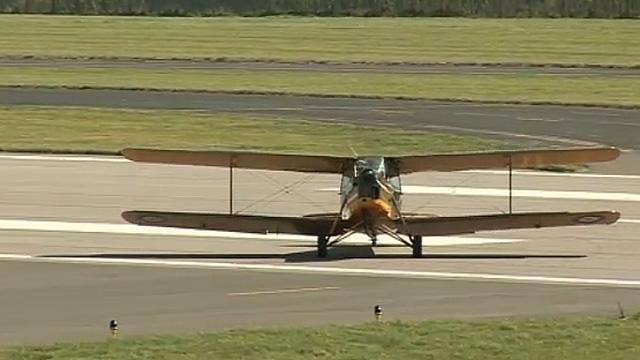Comet Racer returns to Hatfield for de Havilland anniversary
- Published
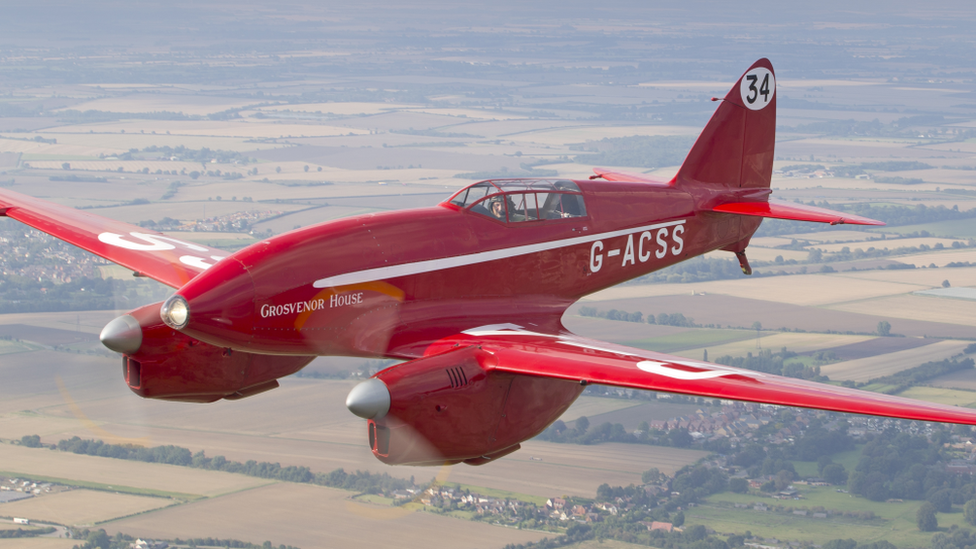
Three de Havilland DH88s were produced for private owners for a 1934 England-Australia race at a subsidised price of £5,000 each
A classic 1930s plane is due to fly in a display over the town where it was built for what is thought to be the first time since the early 1990s.
The de Havilland DH88 Comet Racer is known for winning the 1934 England-Australia MacRobertson Air Race.
It will fly over the original de Havilland airstrip in Hertfordshire to celebrate the 70th anniversary of the first flight of the DH 106 Comet - the world's first commercial jet airliner.
No airworthy DH 106s remain.
This Comet Racer - the G-ACSS Grosvenor House - will take its place instead and fly on 27 July over Ellenbrook fields - the site of the old de Havilland airport.
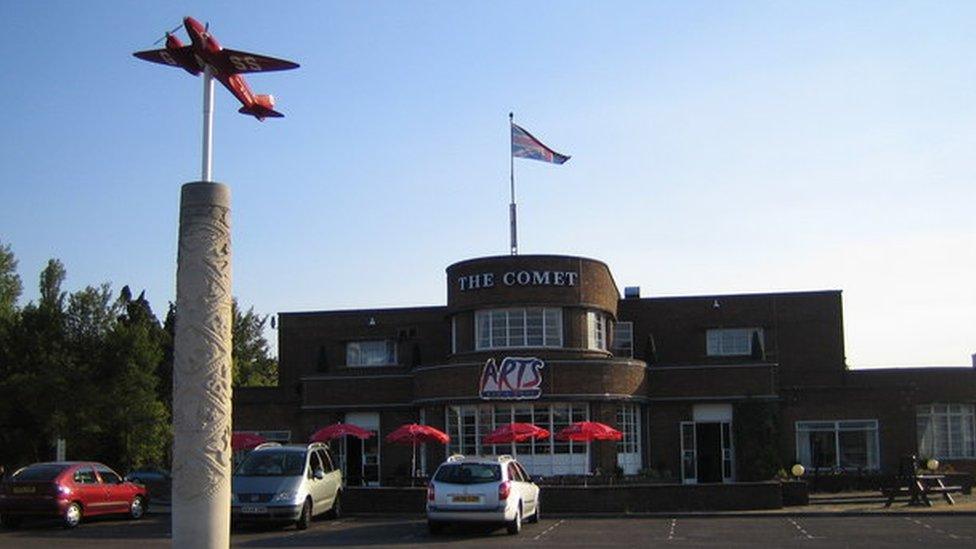
A model of a Comet Racer has recently been returned to the site of the former Comet hotel, which used to be a landmark on the A1 until that section of the dual carriageway was moved
The de Havilland Aircraft Company Ltd opened an aerodrome in Hatfield in 1930 and the Comet Racer was developed by Sir Geoffrey de Havilland for the MacRobertson Air Race, from Mildenhall in Suffolk to Melbourne, Australia.
The G-ACSS Grosvenor House won it with a time of 70 hours and 54 minutes.
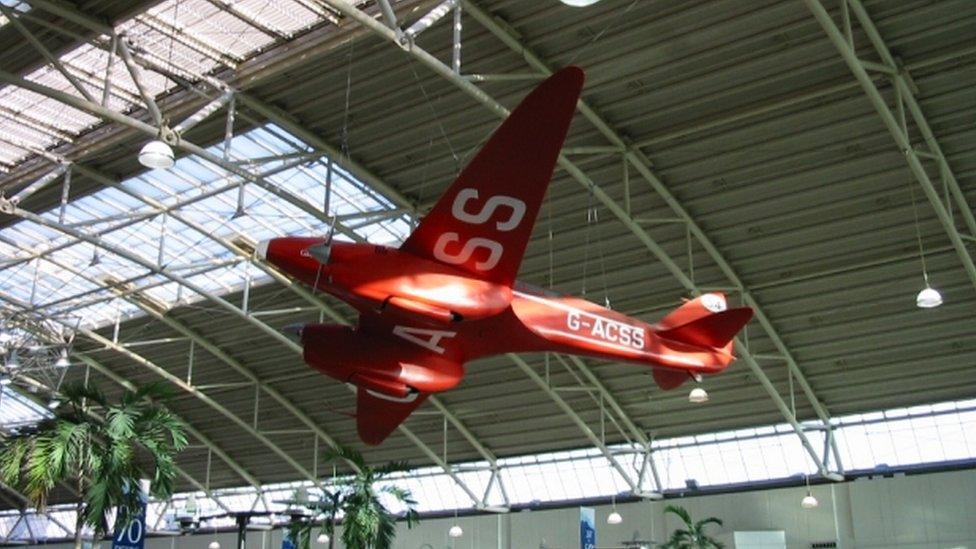
A replica of the de Havilland DH 88 Comet registration G-ACSS used to hang from the ceiling of the Galleria Shopping Centre in Comet Way, Hatfield
It flew in displays at Hatfield in the 1980s and early 1990s, but there is no record of it displaying there since.
This display organised by Hatfield Town Council is part of a week of events, external celebrating the first flight of the DH 106 Comet in 1949.

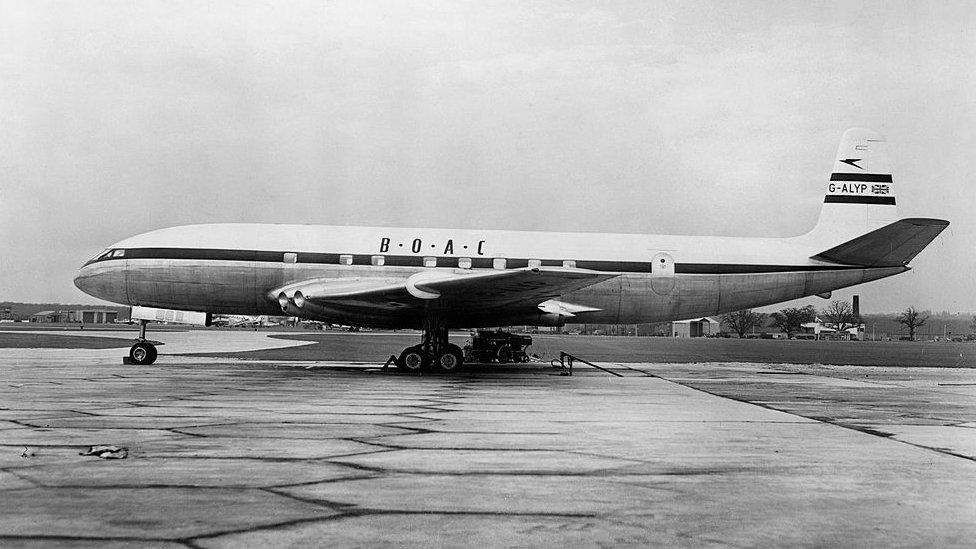
The DH 106 Comet was the first commercial jet airliner
The DH 106's test flight
Wendy Lewis, now in her 70s and living in St Albans, was a secretary at the de Havilland Aircraft Co. in 1958.
"I was present at the very first test flight of the newly-designed Comet Airliner by Group Captain John Cunningham," she said.
"We all held our breath as he took off for the very first time.
"As he landed the aircraft and he came down the stairs to the cheers of all of us on the ground, I really felt I was part of history."

Council leader Lenny Brandon said: "The 27 July is the 70th anniversary of the first flight of any jet liner anywhere in the world, which happened at Hatfield and that needs shouting from the rooftops because the jet airliner opened up the world."

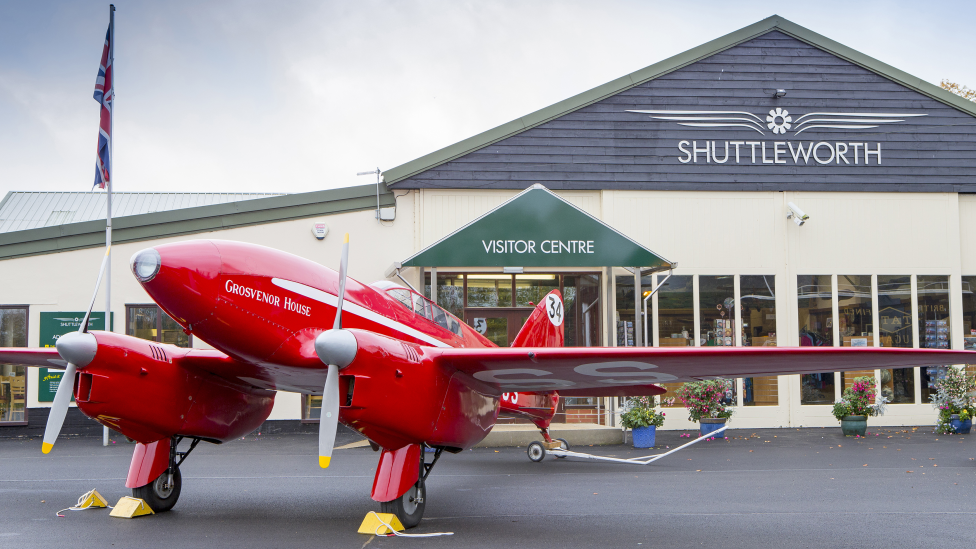
The DH88 Comet Racer - G-ACSS
Built for the 1934 race, G-ACSS was evaluated by the RAF and appeared in the 1936 Hendon Pageant
After several accidents in the RAF it was sold to a private owner, renamed The Orphan it came fourth in the England-Damascus Air Race, 1937
Having been renamed The Burberry, it spent World War Two stored at Gravesend, Kent
It was given to the Shuttleworth Collection, Bedfordshire in 1965
After modifications and successful test flights in 2014, it is a regular performer at Shuttleworth air displays

- Published8 March 2018
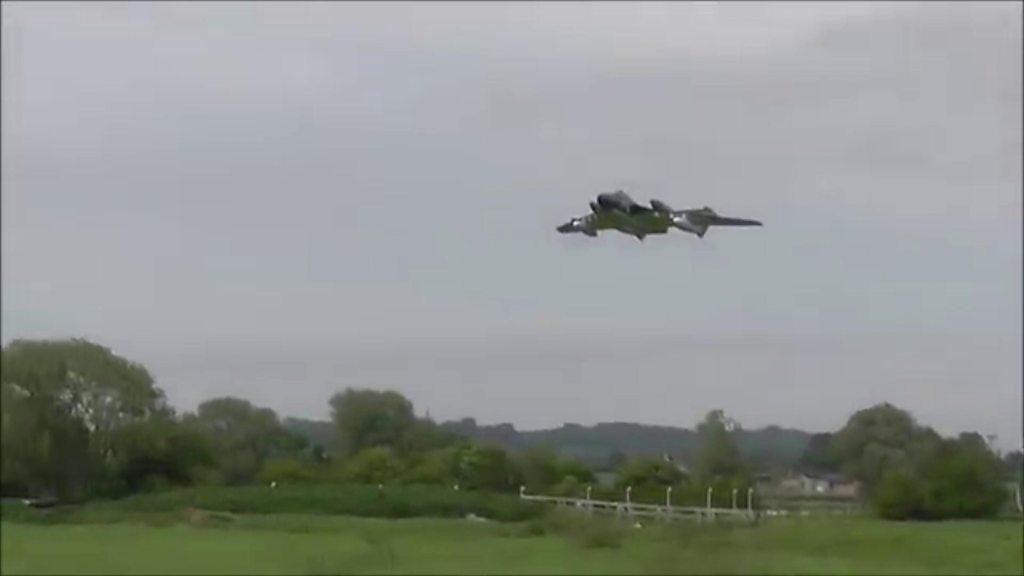
- Published25 November 2015
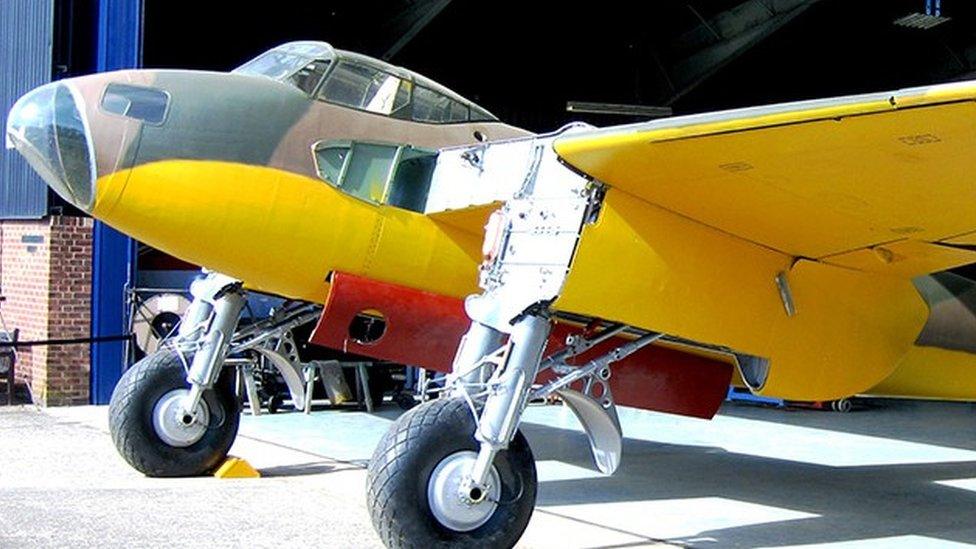
- Published6 August 2014
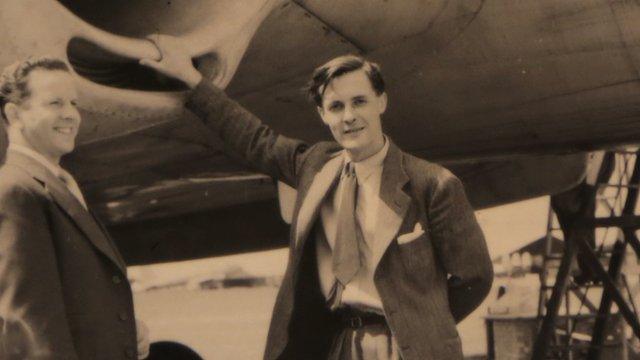
- Published3 September 2013
